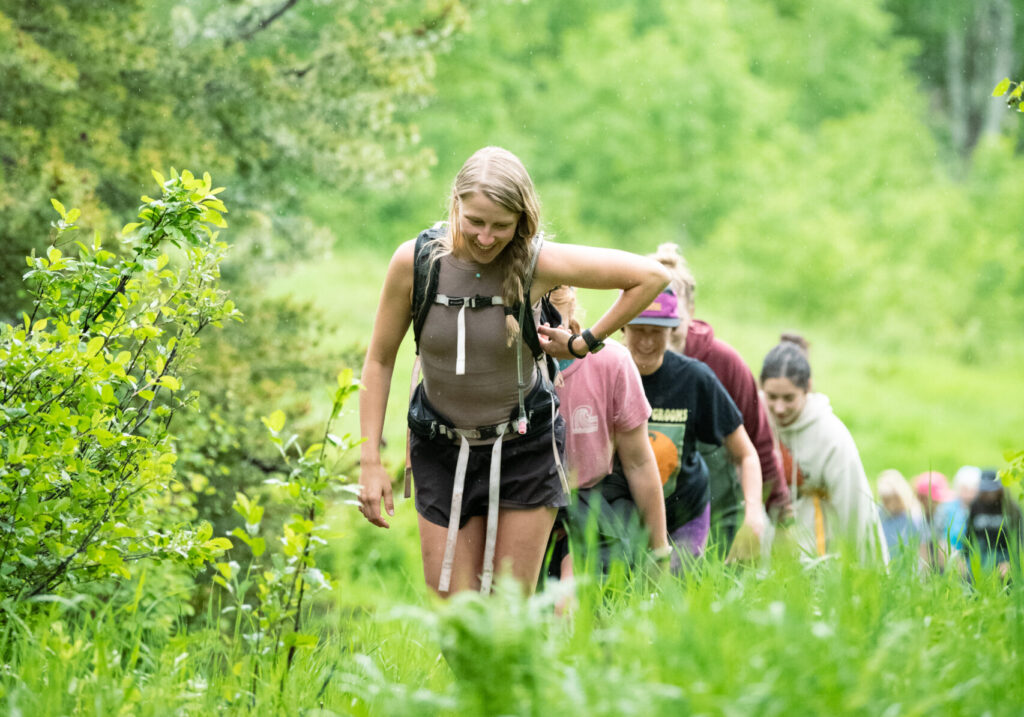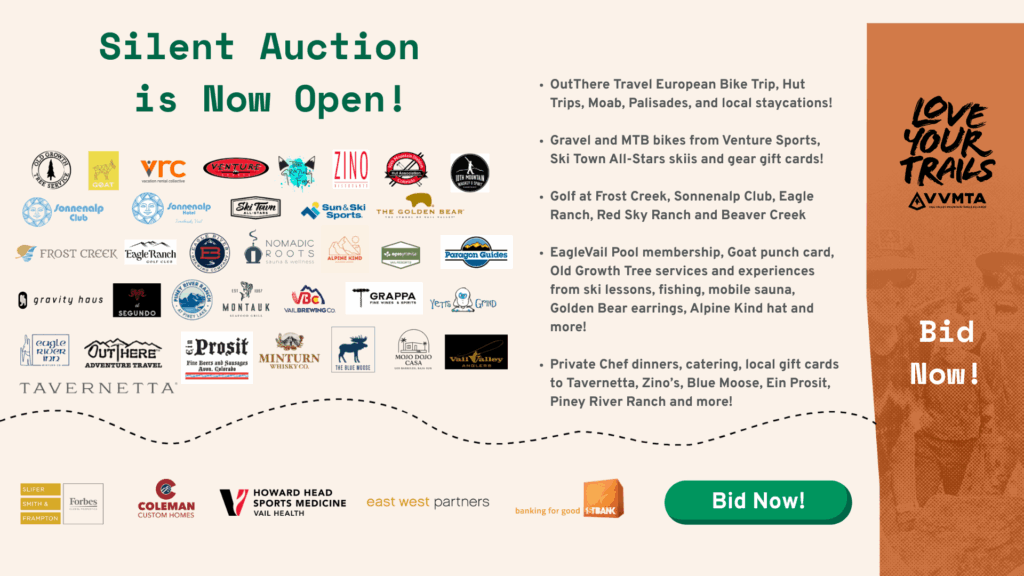Heatlthy Trails. Healthy People. Stronger Community.
When was the last time you truly disconnected from your daily hustle, left the phone behind, and immersed yourself in the simple joys of nature? With the days getting longer and warmer, now is the perfect time to step outside, feel the dirt under your feet, and get on a trail to reconnect with the beauty that surrounds us. Trails are more than just pathways, they are gateways to better health, deeper connections, and stronger, more resilient communities.
At the Vail Valley Mountain Trails Alliance (VVMTA), we believe that time spent on a trail can be one of the most transformative and rewarding experiences you can have. Whether you are walking, running, biking, hunting, or simply taking in the views, the trails offer a chance to recharge, to find joy, and to build a healthier, happier life for yourself and those around you.
Imagine yourself on your favorite trail on a sunny Colorado spring day. You are completely absorbed in the moment, aspens are budding, wildflowers are blooming, the trail soft beneath your shoes or tires, the songs of migrating birds filling the air. For a little while, your daily worries fade away. The world feels lighter, and you find yourself exactly where you want to be.
That feeling of presence and joy is no accident. Trails have a remarkable way of carrying us into a “flow state,” a place where happiness, focus, and well-being naturally rise. Even just imagining a peaceful walk or ride through the mountains can lift your spirits. Are you smiling yet?
Beyond providing a connection to nature and recreational opportunities, trails deliver lasting benefits that shape the health of our community. Economically, they boost tourism and local business. Environmentally, they protect open spaces and encourage conservation. But perhaps the most profound impact trails have is on our physical and mental health.
Spending time in nature is strongly linked to a range of positive mental health outcomes, including reduced stress, improved mood, sharper focus, and a lower risk of developing mental health conditions (American Psychological Association, Vol. 51, No. 3, 2020). Nature also increases happiness, promotes stronger social connections, and provides a greater sense of meaning and purpose (Science Advances, Vol. 5, No. 7, 2019).
The benefits are even greater for youth. Young people who grow up with access to trails and green spaces are less likely to face mental health challenges such as depression, mood disorders, and substance use issues later in life. In fact, children with limited access to green spaces have a 55% higher risk of developing psychiatric disorders (PNAS, Vol. 116, No. 11, 2019).
One of the most beautiful gifts trails offer is the feeling of connection to ourselves, to nature, and to one another. This sense of connection nurtures self-esteem, emotional resilience, and social skills, enriching both our personal growth and our relationships (International Journal of Wellbeing, Vol. 5, No. 4, 2015). People who feel more connected to nature have greater eudaimonic well-being, a type of contentment that goes beyond just feeling good and includes having meaningful purpose in life (Journal of Happiness Studies, Vol. 21, No. 3, 2020).
So how much trail time do you need to experience these benefits? Research suggests that spending at least 120 minutes a week in nature can make a measurable difference (Scientific Reports, Sci Rep 9, 7730, 2019). Whether you break that time into small, daily doses or dive into longer weekend adventures, every minute spent outdoors matters. And for those endurance athletes or multi-day racers, studies show that benefits tend to peak around three to five hours per week.
This May, in honor of Mental Health Month, we invite you to join us in celebrating the rejuvenating power of the outdoors. Commit to spending at least two hours each week on the trail. If you are looking for a place to start, check out our Soul Dirt program. Soul Dirt creates inclusive opportunities for everyone to connect with nature and experience the transformational magic of our beloved trails.
At the VVMTA, we are proud to help foster a healthier, more connected community. Through our trail advocacy, stewardship programs, volunteer opportunities, and educational efforts, we work to ensure that everyone can access and enjoy the outdoors. Together, we can build a future where trails continue to enrich lives, strengthen community ties, and inspire a deeper love for the land we call home.
The VVMTA’s mission is to maintain, create, and advocate for sustainable trail systems that connect people to nature, promote environmental stewardship, and strengthen community well-being. The VVMTA is the trusted, enduring leader in trail based recreation—connecting a diverse community to well-loved trails, supporting health, quality of life, economic vitality, and championing a model of access and stewardship of our public lands that benefits everyone.
Ernest Saeger
Executive Director
Works Cited
Colin, Capaldi A., and et al. “Flourishing in nature: A review of the benefits of connecting with nature andn its application as a wellbeing intervention.” International Journal of Wellbeing, vol. Vol 5, no. 4, 2015, p. 16. Mental Health America, https://mhanational.org/surroundings/outdoors-nature.
Kristine, Engemann, and Et Al. “Residential green space in childhood is associated with lower risk of psychiatric disorders from adolescence into adulthood.” PNAS, vol. Vol 116, no. No 11, 2019, p. 6. PNAS, https://www.pnas.org/doi/full/10.1073/pnas.1807504116.
Mathew, White P., and et al. “Spending at least 120 minutes a week in nature is associated with good health and wellbeing.” Scientific Reports, vol. Sci Rep 9, no. 7730, 2019, p. 11. Nature.com, https://www.nature.com/articles/s41598-019-44097-3#article-info.
University of Washington, and Gregory Bratman. “Nature and mental health: An ecosystem service perspective.” Science Advances, vol. Vol 5, no. 7, 2019, p. 14. Science Advances, https://www.science.org/doi/10.1126/sciadv.aax0903.
Weir, Kirsten. “Nurtured by nature.” American Psychological Association, vol. Vol. 51, No. 3, no. April 1, 2020, 2020, p. 50. American Psychological Association, https://www.apa.org/monitor/2020/04/nurtured-nature.
White, Mathew P., and et al. “Nature and life satisfaction: Evidence from a natural experiment.” Journal of Happiness Studies, vol. 20, 2019, pp. 279–298. Springer, https://link.springer.com/article/10.1007/s10902-019-00118-6.


